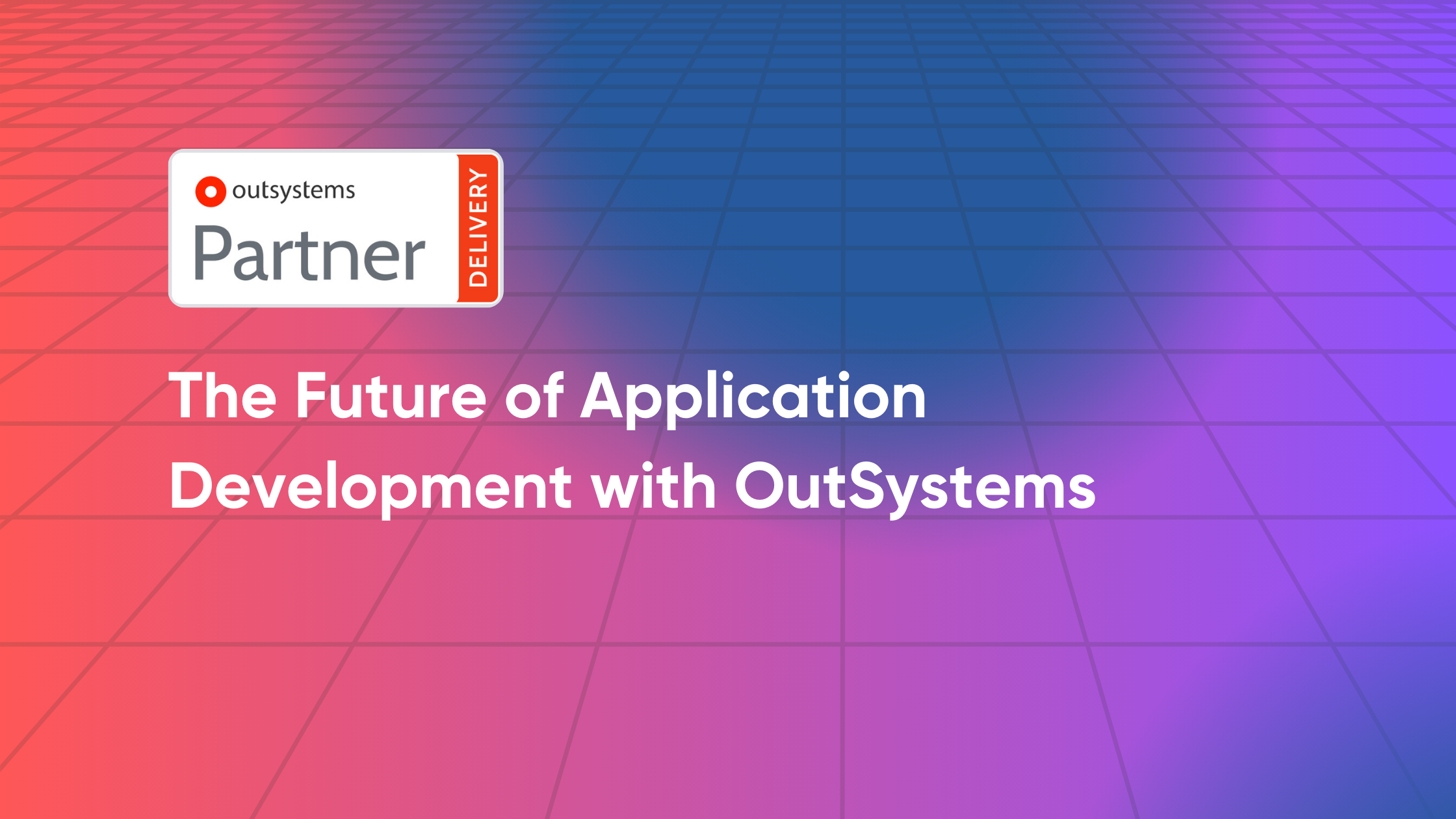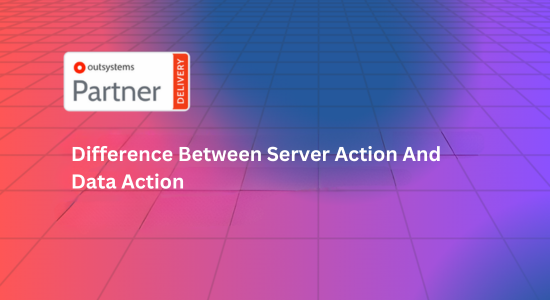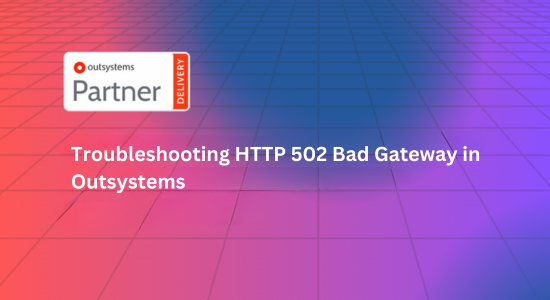The digital landscape is evolving rapidly, driven by the need for businesses to innovate and adapt quickly. Traditional software development methods, with their lengthy timelines and resource-intensive processes, often struggle to keep up with the pace of change. This is where low-code platforms like OutSystems come into play, offering a faster, more agile approach to application development. As businesses worldwide embrace digital transformation, the future of application development with OutSystems promises to be transformative.
1. The Growth of Low-Code Development
1.1. The Rise of Low-Code Platforms
Low-code development platforms have gained significant traction in recent years, enabling organizations to create applications with minimal hand-coding. OutSystems, as one of the leading low-code platforms, empowers developers to build complex applications quickly and efficiently. This trend is expected to continue as more businesses recognize the value of low-code platforms in accelerating digital transformation.
1.2. Democratizing Application Development
One of the key benefits of low-code platforms is their ability to democratize application development. OutSystems enables non-technical users, such as business analysts and department heads, to participate in the development process. This democratization is critical as it allows for more diverse input and ensures that applications are closely aligned with business needs. In the future, we can expect to see even more collaboration between IT and business units, leading to more innovative and effective solutions.
1.3. Addressing the IT Skills Gap
The global shortage of skilled developers is a significant challenge for many organizations. OutSystems helps bridge this gap by enabling less experienced developers to create powerful applications with minimal coding. The platform’s visual development environment, coupled with pre-built components and templates, makes it easier for teams to deliver high-quality applications quickly. As the demand for digital solutions continues to grow, OutSystems will play an increasingly important role in addressing the IT skills gap.
2. The Integration of Artificial Intelligence and Automation
2.1. AI-Powered Development
Artificial Intelligence (AI) is revolutionizing various industries, and application development is no exception. OutSystems is integrating AI into its platform to enhance the development process. AI can assist developers by offering intelligent code suggestions, identifying potential errors, and automating repetitive tasks. This AI-driven approach reduces the time required to develop applications and improves the overall quality of the code.
2.2. Automated DevOps with OutSystems
DevOps practices are essential for modern application development, ensuring that software is delivered quickly and reliably. OutSystems is increasingly incorporating automation into DevOps processes, including continuous integration and continuous deployment (CI/CD). Automated testing, deployment pipelines, and monitoring tools within OutSystems streamline the development lifecycle, reducing the time and effort required to deliver applications to production.
2.3. Intelligent Process Automation
OutSystems is also exploring the potential of Intelligent Process Automation (IPA), which combines AI with automation to streamline business processes. By integrating IPA into the development workflow, OutSystems can help organizations automate complex processes, reduce manual effort, and enhance operational efficiency. This integration will be particularly valuable for industries with repetitive, time-consuming tasks that can be automated.
3. Expanding the Scope of OutSystems
3.1. From Simple to Complex Applications
Initially, low-code platforms like OutSystems were perceived as tools for building simple, departmental applications. However, the platform has evolved significantly, enabling the development of complex, enterprise-grade applications. Organizations are now using OutSystems to build mission-critical systems, such as customer relationship management (CRM) platforms, enterprise resource planning (ERP) systems, and large-scale e-commerce websites.
3.2. Supporting Enterprise-Grade Solutions
OutSystems’ ability to support enterprise-grade solutions is a significant factor in its growing popularity. The platform offers robust scalability, security, and integration capabilities, making it suitable for large organizations with complex IT environments. As more enterprises adopt OutSystems, the platform is likely to continue enhancing its features to meet the needs of large-scale, high-performance applications.
3.3. Industry-Specific Solutions
Another emerging trend is the development of industry-specific solutions using OutSystems. The platform’s flexibility allows it to be tailored to the unique needs of various industries, such as healthcare, finance, manufacturing, and retail. OutSystems provides industry-specific templates, components, and integrations that accelerate the development of applications tailored to specific business requirements. This trend is expected to grow as more industries recognize the value of low-code development.
4. Embracing Emerging Technologies
4.1. The Role of IoT in Application Development
The Internet of Things (IoT) is transforming industries by connecting devices and enabling real-time data collection and analysis. OutSystems is well-positioned to integrate with IoT ecosystems, allowing developers to create applications that interact with connected devices. As IoT adoption increases, OutSystems will likely continue to enhance its capabilities to support the development of IoT-enabled applications.
4.2. Blockchain Integration
Blockchain technology is gaining traction across various industries, particularly in areas like supply chain management, finance, and healthcare. OutSystems is exploring ways to integrate blockchain capabilities into its platform, allowing developers to create applications that leverage the security, transparency, and immutability of blockchain. This integration could open up new possibilities for developing secure, decentralized applications.
4.3. Augmented and Virtual Reality
Augmented reality (AR) and virtual reality (VR) are rapidly evolving technologies with the potential to revolutionize various industries. OutSystems is likely to integrate AR and VR capabilities into its platform, enabling developers to create immersive applications. These technologies can be particularly valuable in fields such as training, education, retail, and healthcare, where immersive experiences can enhance user engagement and outcomes.
4.4. Multi-Experience Development
The future of application development involves creating seamless experiences across multiple devices and platforms, including mobile, web, wearables, and IoT devices. OutSystems is focusing on multi-experience development, which allows developers to build applications that deliver consistent user experiences across various channels. This approach ensures that users can interact with applications in a way that suits their preferences, regardless of the device they use.
5. Enhancing Security and Compliance
5.1. Strengthening Security Measures
As cyber threats continue to evolve, security remains a top priority for organizations. OutSystems is committed to enhancing the security of its platform to ensure that applications built on it are secure by design. The platform offers features such as role-based access control, data encryption, and secure coding practices to protect sensitive information. As the threat landscape becomes more complex, OutSystems will continue to invest in advanced security measures.
5.2. Ensuring Regulatory Compliance
Compliance with data privacy regulations, such as the General Data Protection Regulation (GDPR) and the Health Insurance Portability and Accountability Act (HIPAA), is critical for organizations handling sensitive data. OutSystems provides built-in features that help organizations meet regulatory requirements, such as data anonymization, consent management, and audit trails. By offering these capabilities, OutSystems enables businesses to focus on innovation while ensuring compliance with legal standards.
6. The Growing OutSystems Ecosystem
6.1. Expansion of Third-Party Integrations
The strength of a development platform often lies in its ecosystem. OutSystems has a growing ecosystem of third-party integrations, extensions, and marketplace components that extend the platform’s capabilities. Developers can leverage these resources to accelerate development, integrate with existing systems, and add new features to their applications. As the ecosystem continues to expand, OutSystems users will have access to an even broader range of tools and resources.
6.2. Building a Vibrant Community
The OutSystems community is a valuable resource for developers, offering support, training, and knowledge sharing. As the platform’s popularity grows, the community is expected to expand, providing even more opportunities for collaboration and learning. OutSystems also offers a wealth of resources, including tutorials, webinars, and certification programs, to help developers master the platform and stay up to date with the latest features.
6.3. Collaboration with Industry Leaders
OutSystems is actively collaborating with industry leaders to enhance its platform and expand its reach. These partnerships enable OutSystems to integrate with other leading technologies and offer new capabilities to its users. As OutSystems continues to grow, we can expect to see more strategic partnerships that drive innovation and expand the platform’s ecosystem.
7. Sustainability and Green Development
7.1. Promoting Sustainable Development Practices
Sustainability is becoming an increasingly important consideration for businesses, and the tech industry is no exception. OutSystems is exploring ways to promote sustainable development practices, such as optimizing applications for energy efficiency and reducing the carbon footprint of development activities. By encouraging eco-friendly coding practices, OutSystems can help organizations meet their environmental goals while delivering high-performance applications.
7.2. Supporting Green IT Initiatives
As organizations pursue digital transformation, they must also consider the environmental impact of their technology choices. OutSystems can play a role in supporting green IT initiatives by providing tools and practices that minimize resource consumption and promote sustainability. This focus on sustainability could become a competitive differentiator for OutSystems in the future, as more businesses prioritize environmental responsibility.
8. The Role of OutSystems in Digital Transformation
8.1. Enabling Rapid Innovation
In today’s fast-paced business environment, the ability to innovate quickly is crucial for staying competitive. OutSystems enables organizations to rapidly develop, test, and deploy new applications, allowing them to respond to market changes and customer needs in real time. This agility is particularly valuable in industries that are undergoing significant disruption, such as retail, finance, and healthcare.
8.2. Modernizing Legacy Systems
Many organizations are burdened by legacy systems that are difficult to maintain and scale. OutSystems offers a solution by providing a platform for modernizing these systems without the need for a complete overhaul. By integrating with existing IT infrastructure, OutSystems allows organizations to extend the life of their legacy systems while gradually transitioning to modern, cloud-based applications.
8.3. Driving Customer-Centric Innovation
Customer expectations are higher than ever, and businesses must continuously innovate to meet these demands. OutSystems enables organizations to develop customer-centric applications that enhance the user experience and drive engagement. By providing tools for rapid prototyping and iteration, OutSystems allows businesses to experiment with new ideas and quickly bring successful innovations to market.
9. Challenges and Considerations
9.1. Managing Complexity
As OutSystems continues to evolve, the platform’s increasing complexity may present challenges for some organizations. While the low-code approach simplifies many aspects of development, it also requires careful planning and governance to ensure that applications are scalable, maintainable, and secure. Organizations must invest in training and resources to effectively manage the complexity of large-scale OutSystems implementations.
9.2. Balancing Speed and Quality
One of the key advantages of OutSystems is its ability to accelerate development. However, organizations must balance speed with quality to ensure that applications meet user expectations and business requirements. This requires a disciplined approach to testing, code review, and quality assurance, even in a low-code environment.
9.3. Ensuring Long-Term Viability
As with any technology investment, organizations must consider the long-term viability of the OutSystems platform. This includes evaluating the platform’s scalability, support for emerging technologies, and alignment with future business goals. By carefully assessing these factors, organizations can ensure that their OutSystems applications remain relevant and valuable over time.
Conclusion
The future of application development with OutSystems is bright, driven by the platform’s ability to empower businesses with faster, more agile development capabilities. As organizations continue to navigate the challenges of digital transformation, OutSystems offers a powerful solution that enables them to innovate quickly, modernize legacy systems, and deliver customer-centric applications.
With the integration of AI, automation, and emerging technologies like IoT and blockchain, OutSystems is poised to remain at the forefront of the low-code revolution. As the platform evolves, it will continue to address the needs of enterprises, support industry-specific solutions, and promote sustainable development practices. By embracing OutSystems, businesses can not only keep pace with the digital age but also position themselves for long-term success in an increasingly competitive landscape.








